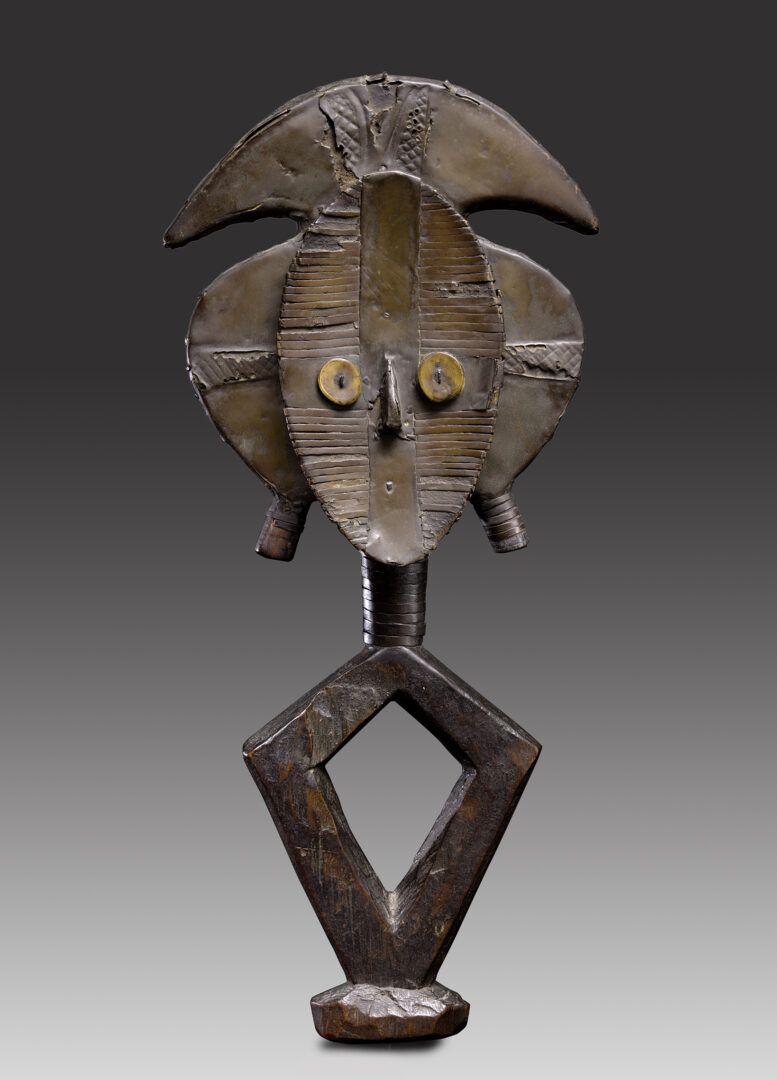
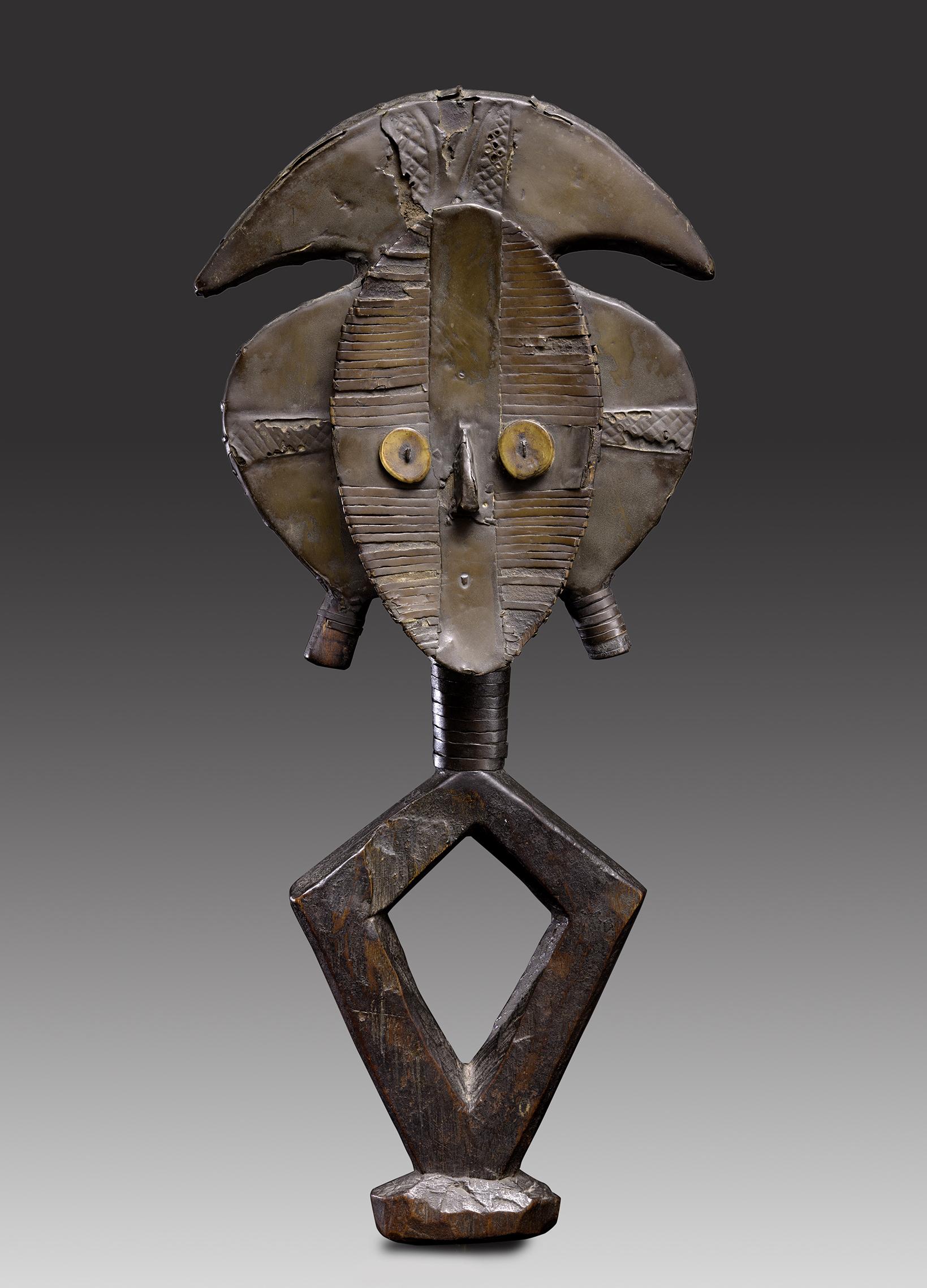
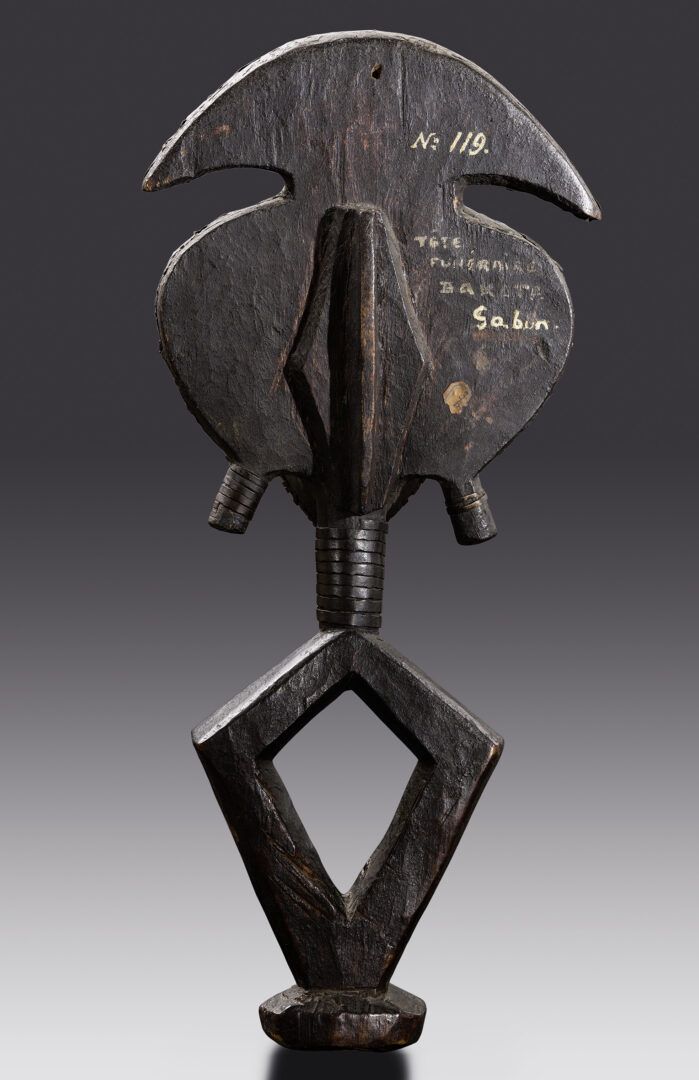
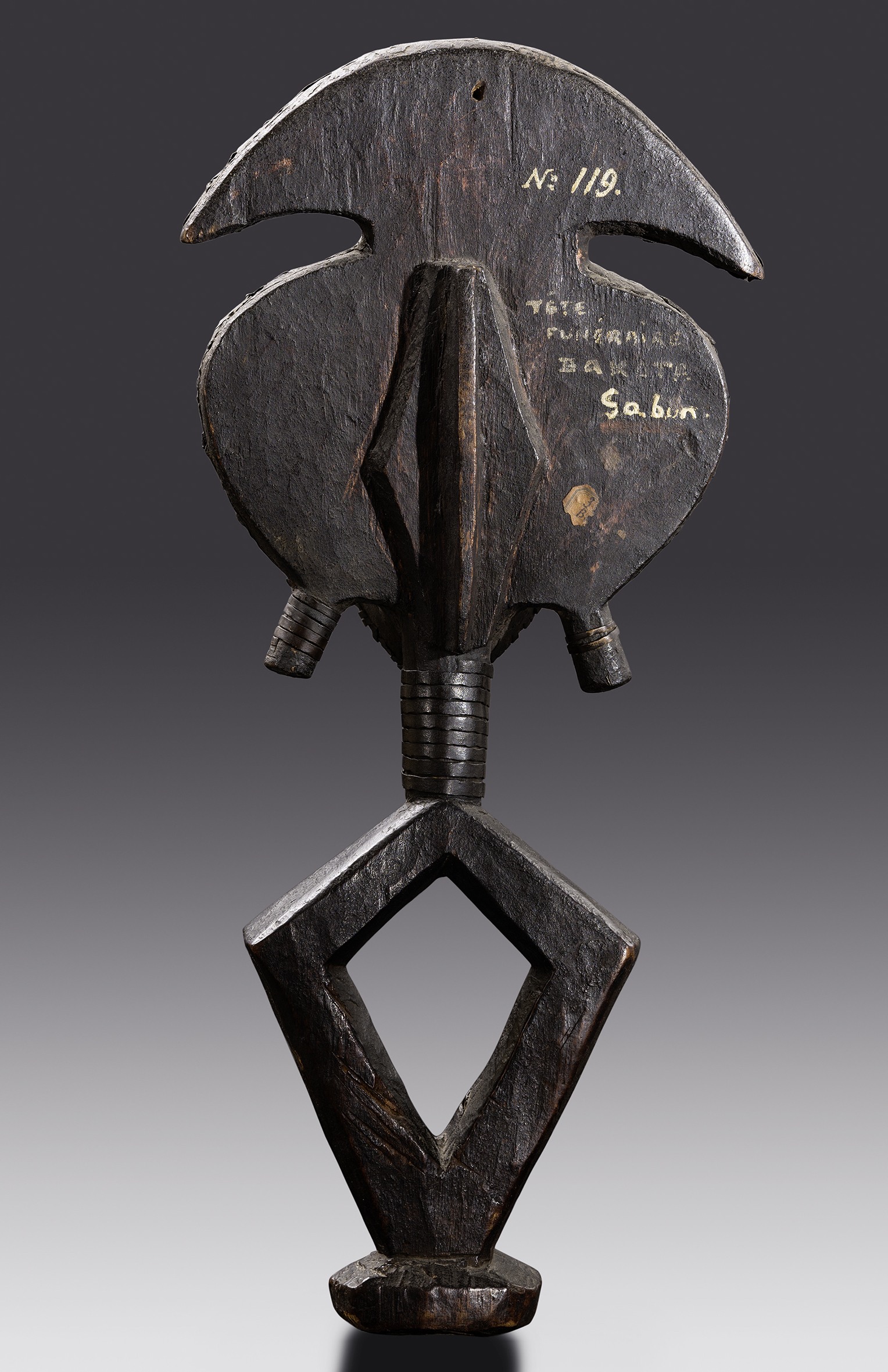
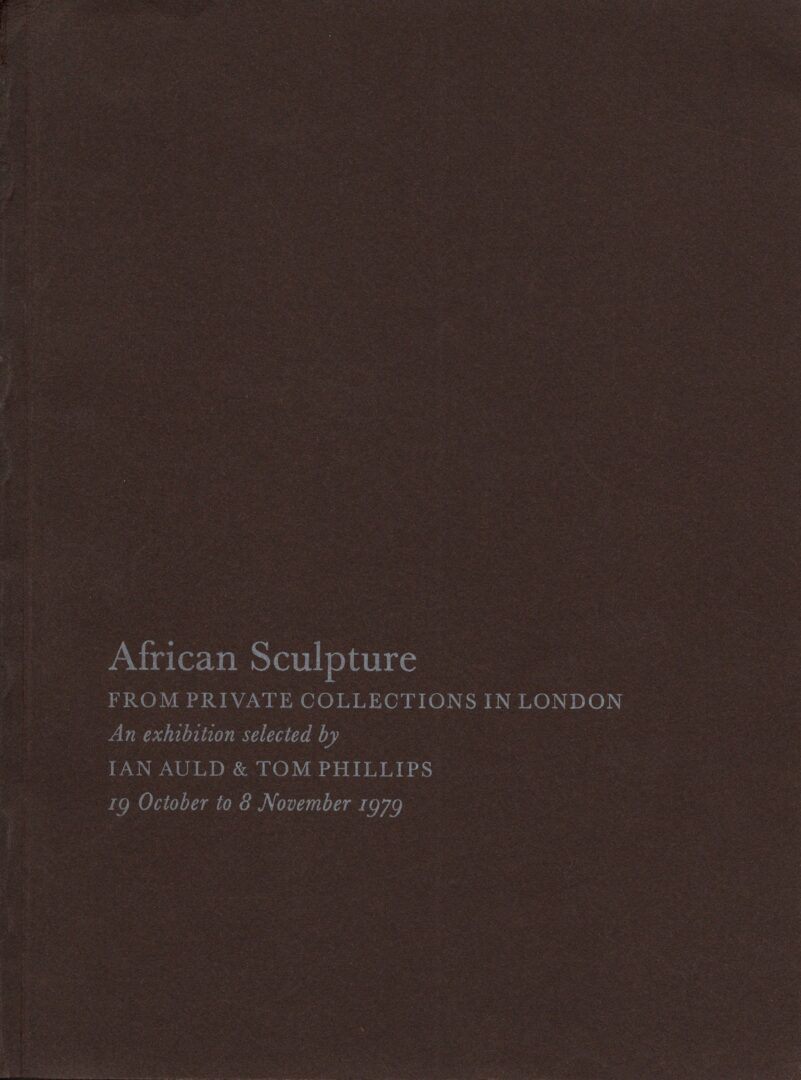
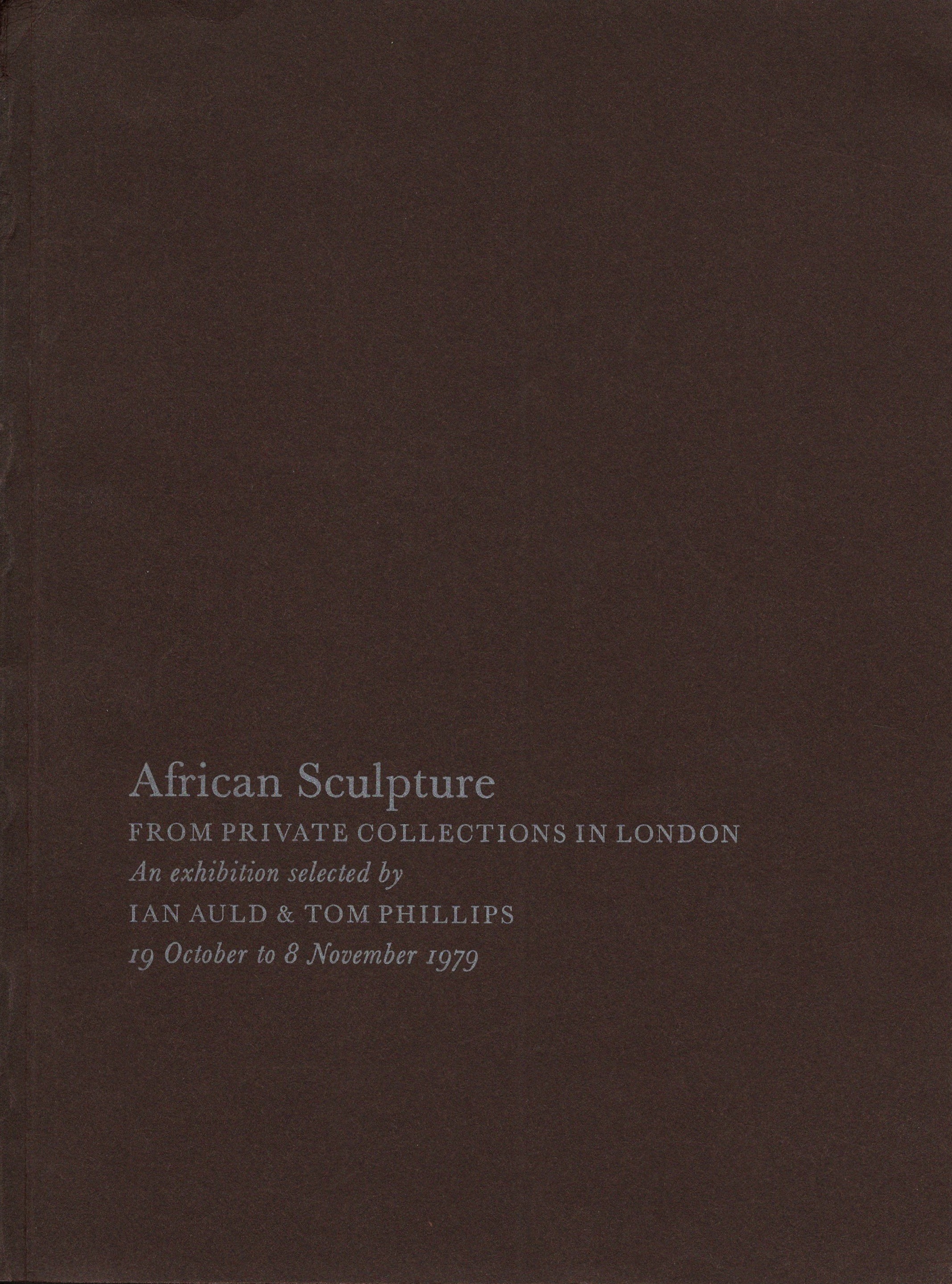
Kota Reliquary Figure, Gabon
19th century or earlier
Wood, copper, brass, bone
H. 43cm
Provenance:
Claus Klausmeyer (1887-1968), Düsseldorf
Ralph Nash, London
Alan Mann, London
William McCarty-Cooper, New York
Christie’s New York, Important Tribal Art and Antiquities from the collection of William A. McCarty-Cooper, May 19, 1992, lot 136
Private collection, UK
Publication and Exhibition:
Ian Auld & Tom Phillips, African Sculpture from Private Collections in London, South London Art Gallery, 1979, n° 153
Price:
Sold
The Kota reliquary figure is a masterpiece, an excellent exemplar of one of the most esteemed types of Kota sculpture. In Alain Chaffins categorization of Kota reliquaries it belongs into Group 6, which is defined as being: “ |…] composed of medium-sized pieces (around 45cm) that are dense, slender, and very carefully made. This group is one of the most beautiful of Kota art.” More recently, Frederic Cloth published a thesis in which he considered this type of Kota figures to be the female counterpart to the works known as Kota reliquaries from the Sebe River Master. Of relatively small size, exceptionally thin brass panels, a patina in pristine condition and with bone eyes, which are very rare and found only among the earliest Kota reliquary figures, it is the perfection in details – such as the perfect flow of the crescent adorned by two stylized feathers – that constitutes the brilliance of this magnificent work of universal significance.
That the collection history of the Kota figure is including several renowned, historic and prestigious collectors and dealers is hence of no surprise. Ralph Nash – the London based dealer famous as only works of art of the highest quality went through his hands – acquired it from Claus Klausmeyer, whose inventory number is inscribed on the back of the Kota. Klausmeyer had discovered the Art of Africa and Oceania in the early 1920s. While a large part of his collection is nowadays part of the Rautenstrauch-Joest Museum in Cologne, he sold a small number of important objects late in his life. It was Alan Mann, another highly distinguished collector of African Art who acquired the Kota reliquary figure from Ralph Nash. For Mann next to the quality of an object, it was the age that he considered to be an important criterion, something that is apparent in this work of art.
In 1979 Ian Auld and Tom Philipps selected this Kota for their exhibition of African sculptures from private collections in London in which they presented the particular strengths of English collections. The next owner of this important Kota work was William McCarty-Cooper, who had also formed a major collection of African Art with a strong focus on the art of Gabon.
